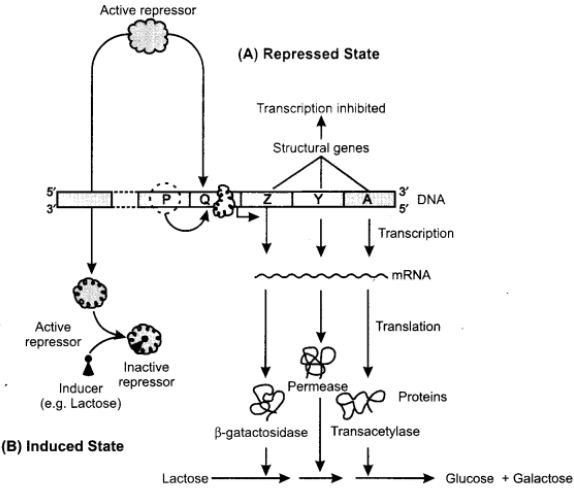The lac Operon Model: The lac operon model is an example of transcriptional regulation of gene expression. The lac operon consists of a promoter, an operator and three structural genes (Fig.). RNA polymerase binds to promoter site of DNA. This result in start of sequential transcription of structural genes (lac Z, lac Y and lac A). The lac Z expresses gene β-galactosidase, lac Y encodes permease and lac A synthesizes transacetylase. The operator site is located between the promoter and first structural gene (lac Z). The repressor protein, expressed by the regulator gene, binds to operator. The structural gene (lac Z. lac Y and lac A) do not express enzymes (A).

The repressor protein expressed by the repressor gene (which is not a part of operon) involves the transcription of structural genes. Transcription of structural genes is stopped when repressor protein is attached on the operator gene. If lactose is supplied, it enters the cell and binds with repressor protein. Then repressor protein is inactivated due to change in conformation of the repressor protein. Therefore, repressor fails to attach on the operator gene, and the structural genes are transcribed into an wRNA which in turn translates the proteins (B).
Here, lactose acts as anti-inducer but not a real inducer. Allolactose (an inducer of lactose) is a natural inducer for the lac operon. In regulation of lac operon, lactose is taken up. Then it is broken by p-galactosidase into glucose and galactose. Galactose is converted into allolactose and lactobiose through a side reaction with lactose. The allolactose induces the operon. Consequently, lactose is utilized enzymatically.